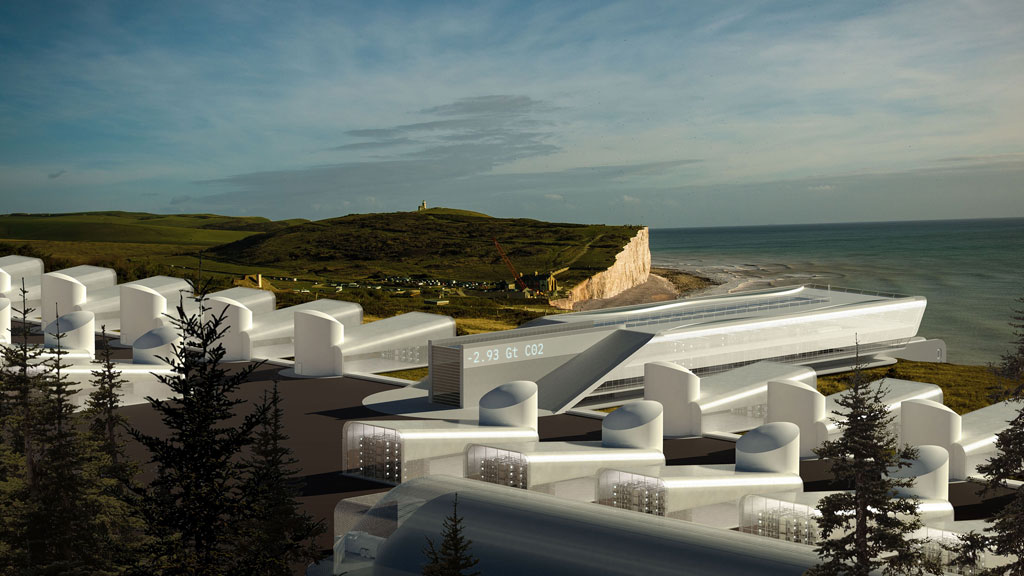Montreal carbon-capture startup Deep Sky continues to move with haste as it forges partnerships with tech specialists in the sector while defying traditional project development timelines.
The business model involves building plants to scrub the atmosphere and oceans of CO2, transforming the captured CO2 into minerals and storing it underground, thus obtaining carbon credits and selling the credits to entities aiming to meet emissions-reduction obligations.
A pilot demonstration of the technology capturing 100 tonnes of CO2 annually will be built in Quebec, with the aim to eventually construct commercial facilities that capture between 100,000 and one million tonnes annually.
Deep Sky co-founder Fred Lalonde says the firm is moving at the swift pace of the tech world in developing the pilot carbon capture and storage project in part because it has the right leadership team, with former tech executives at Hopper, Airbnb and the Blackstone Group at the board table, and also because of the urgency of the impending climate disaster.
Current climate strategies are not nearly enough given that over the last 150 years, there have been more than 800 gigatonnes of CO2 released into the atmosphere, Deep Sky argues, with the repercussions soon to be felt in ways that are not widely understood.
“People need to understand the problems as they really are in order to get mobilized,” said Lalonde recently.
“We thought, hey, there is a probably a way to come from our world, which is financing and software, and take what would normally be a 20- to 30-year timeline and condense it down to five years.
“If we just do that, we can prove to the world that we can build the trillion-dollar industry that we need to remove the CO2 from the atmosphere.”
Around 2019, Lalonde said, he and his partner at Hopper Joost Ouwerkerk began to take the climate challenge more seriously, especially given their industry created so many greenhouse gases.
The partners were joined at Deep Sky by Laurence Tosi, the former CFO of Airbnb and the Blackstone Group.
“We got a coalition together to accelerate a response to this problem because the effects of climate change are accelerating. I think in two or three years, people are going to realize how bad it is,” said Lalonde.
In the past month Deep Sky has formally partnered with Exterra Carbon solutions, which is pioneering engineered mineralization to permanently store CO2, and Captura, whose direct ocean capture process uses electrodialysis technology to capture CO2 directly from seawater as it passes through a plant.
Captura has been operating a one-tonne-per-year demonstration system at Newport Beach, Calif. since August 2022.
As part of the Quebec pilot, which will involve two “alpha” plants, Exterra will store Deep Sky’s captured carbon using abandoned mine tailings in locations such as Thetford Mines, Que. Lalonde said there is already permitting in place allowing use of the asbestos tailings at Thetford Mines.
Deep Sky would capture atmospheric CO2 molecules from the open air using large fans that push the air over adsorbent solid particles or liquid sorbents.
The materials are then heated or electrically charged to release the captured CO2 so that it can be stored.
The firm intends to build geological storage sites in ultramafic (igneous) rock, with minerals injected, and saline aquifers deep below the surface of the earth.
Construction is targeted for 2024. Quebec has been selected because of its inexpensive renewable hydroelectricity, its workforce with experience in mines, its geology and other reasons.
Lalonde said there is so much support from the federal government for the initiative that he figures the government will cover a significant portion of the $500-million pilot project price tag.
Lalonde admits the forced-air reactors to be employed in the air capture process do not currently exist.
“We have to learn how to make these reactors, at a speed that is similar to cellphones,” said Lalonde.
“We don’t know how to move a million cubic metres of air.
“Before we build a $500 million plant, which we’re trying to do, we actually have to run the reactors.”
Lalonde believes Deep Sky can “throw the buildings together pretty quickly.”
As for builders, the firm is “obviously selecting ones that have a history of working fast and reliably.”
The application of layers of software will lead to construction efficiencies, he said.
“Our pilot facilities are rolling out at record speed, validating the tech so the largest supply of carbon credits can be brought to market,” said Lalonde.
The federal government launched Canada’s Greenhouse Gas Offset Credit System in 2022, providing a domestic template for the credit trading system, and Environment and Climate Change Canada has also indicated that the next round of protocols for development will include direct air carbon capture and sequestration.
Deep Sky calls itself the world’s first gigatonne-scale carbon capture company. Lalonde said the carbon capture sector will eventually be five or 10 times larger than the oil and gas industry.
“This will be the largest economic undertaking humanity will have to face.”
Follow the author on Twitter @DonWall_DCN.








The ONLY sense now CO2 capture that makes any sense is at the sources..The Worst stationer offenders are cement plants.
Here from Wikipedia:” A rotary kiln of 6 x 100 m makes 8,000–10,000 tonnes per day, using about 0.10-0.11 tonnes of coal fuel for every tonne of clinker produced”. [ generating] 0.6 Tons. of CO2 for each ton of cement .
So why ON EARTH build a very expensive plant in the boondocks that takes a YEAR -to capture what such plant produces in FIFTEEN MINUTES! The HUGE concentration at source almost dictates, collect the super concentrated CO2 at the plant- Not out in the boonies, just to collect misdirected government greenwash, AKA- my taxes ! !
We must waste NO More.
J. Doak
PS. We réutilisé 2nd hand industrial equipment. Re-Use IS the best green!
PS. Why not get the heat needed to “extract the CO2 from the absorbant materials” from the waste heat from the cement kilns?